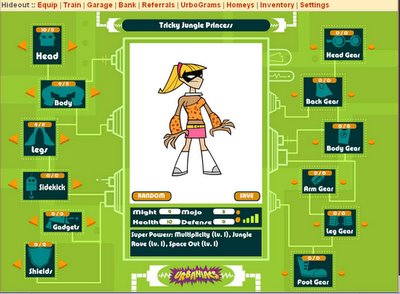From the Information Superhighway to the Street

Street art -- particularly political street art -- has gotten an organizational and promotional boost from the Internet in its subversive branding efforts. As examples of official anti-official rhetoric, several webpages in the "how-to" genre are particularly worthy of note.
Specific instructions for protest participants about how to conduct themselves while committing acts of civil disobedience have a long, rhetorical history. In some ways these user-oriented instructions were as significant as the stirring speeches and iconic images of nonviolent political movements, particularly in the case of the civil rights sit-ins and marches, where freedom riders and local demonstrators had to be prepared with specific techniques to respond to multiple strategies of humiliation and abuse coming from law enforcement . . . as well as from even more dangerous local vigilantes.
Many of those protesting the current war in Iraq are combining street action with online multimedia. Even a low-tech operation like the Freeway Blogger has a How-To area for sign-posters about location, typeface, legibility, and streetwise (or freeway-wise) information design. Robbie Conal includes his handy, helpful educational film about putting up political posters without getting busted, "Guerrilla Etiquette." Robbie advises would-be posterers to go as a couple, start making out if you are noticed, be polite to police officers who investigate further, and avoid "surface lust." Similarly, Code Pink produces a pamphlet with instructions about how to do an effective banner drop.
Right now, Los Angeles is plastered with Orwellian posters with slogans like "War is Peace." These faux-Conal posters, largely on switch boxes, also advertise the http://www.1984live.com/ URL. It turns out that the guerrilla postering campaign is being sponsored by The Actor's Gang playhouse, which is staging 1984. So spectators are pointed from the street to the Internet to the theatre. Perhaps they are also pointed toward political action or at least to Orwell's book.
Street culture and street art is also featured in many video games, where it is considerably more apolitical. In some of the Tony Hawk video games, such as American Wasteland, players can spend game time tagging when they aren't skateboarding. Tagging also defines the geographical space of the controversial Grand Theft Auto: San Andreas.
Now more complex forms of virtual street art are getting more publicity, because taggers will finally have their own own game. Mark Ecko's Getting Up: Contents under Pressure has recently been released. Certainly, some of the art is even political, although it is often simplistically oriented around proclamations of unassailable slogans like "freedom." Yet players can have "mentors" who are real-life graffiti artists and stencil creators, so there is an apprenticeship feature to the game that encourages social engagement in communities situated around street art, albeit one that takes for granted the norms of a "celebrity culture."
Unfortunately, players can't actually design their own tags in Getting Up, so creative play is constrained, and much of the play is a fighting game devoted to fascist cops and rival street gangs. The political and aesthetic dimensions of urban street art may be better covered on exhibit sites like the one for the documentary "Style Wars" or on practicum web pages like Stencil Revolution.
Certainly online fun like The Urbaniacs provides an alternative to more etherial forms of game play that take place in outerspace or dreamscape environments. I recently played this lightweight 2D Flash game, which was featured in the Los Angeles Times story, "The Urbaniacs Site: Thinking Outside the Burbs," and you can see my frivolous, ass-kicking avatar above.
Labels: urbanism

1 Comments:
There are shades of the D.I.Y. (Do It Youself) movement mixed in here with more classical leftist political rhetoric. D.I.Y. has a built-in (although often simulated, co-opted, or pre-branded) activist and oppositional character. And, since D.I.Y. is often applied to the making of stuff, its application to political signage is a logical move! Thanks for sharing. Your post gives another meaning to the idea of a "D.I.Y. Revolution"!
Post a Comment
<< Home